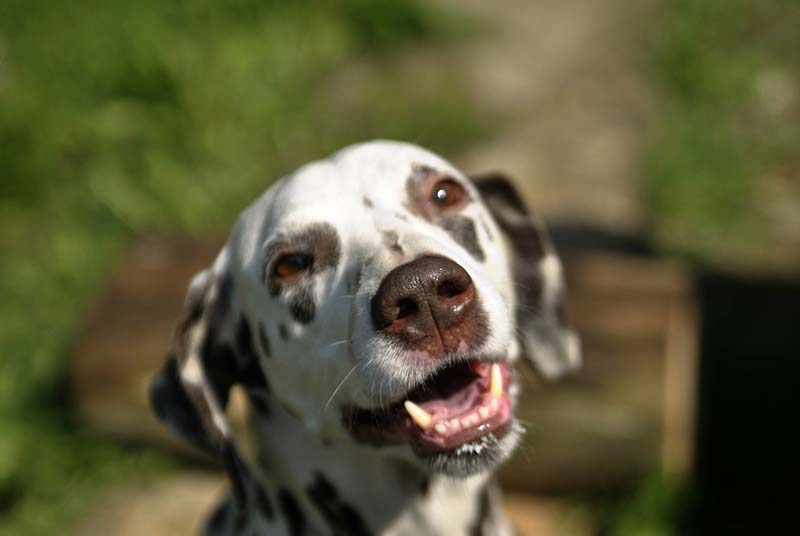Rat Terrier Dalmatian Mix (Dal-Rat) – Hybrid Dog Breed Info
Due to their exciting personalities and looks, hybrid dogs are pretty popular nowadays among dog lovers. The Rat Terrier Dalmatian mix is one of the cute and lovely hybrid-designed dog breeds out there.
Dog cross-breeding started quite a long ago, and there are thousands of cross-breed dogs that are equally demanding as purebred ones. Dal-Rat might not be the most familiar hybrid dog breed you have heard of; nonetheless, for anyone who would like to have a friendly, energetic, and, most notably, unique dog, it is totally worth getting to know this breed.
Dal-Rat is a hybrid dog breed that results from Dalmatians and Rat Terriers. Descending from two famous dog breeds, Dal-Rats are usually a combination of both parent dogs.
The mix of Dalmatians and Rat Terriers creates small to medium-sized dogs; their appearances may significantly vary according to parents’ genetics. When it comes to their personalities, one cannot pinpoint what sort of personality a Dal-Rat will have.
However, they usually are fun-loving, energetic, and friendly canines. All put together, Dal-Rats certainly make great family pets.
Raising a dog is a responsible duty, and raising a hybrid dog might be even more challenging because there is a lot to know about them. As they inherit genes from distinct dog breeds, it is hard to predict what kind of dogs they would create accurately.
Dog parenting is an exciting journey you will go through amidst the challenges and concerns. If you are adventurous and want to raise a unique dog, keep reading this article.
Let’s get to know all the necessary facts about Dal-Rats!
Fast Facts : Rat Terrier Dalmatian Mix (Dal-Rat)
| Average height | 10 – 20 inches |
| Average weight | 10 – 60 pounds |
| Lifespan | 11 – 16 years |
| Suitable for | Active Seniors, Singles or Couples, Families |
| Temperament | Sensitive, Playful, Intelligent, Protective |
| Good for families? | Yes |
| Other nicknames | Dal-Rat, RatMatian, Rat-Matian, Rat Dal Mix |
Origin of Rat Terrier and Dalmatian mix
Speaking of the origin of the Rat Terrier and Dalmatian mix, first, it is essential to understand the origin of parent dogs.
The heritage and earliest roots of the Dalmatians tend to be somewhat unclear. There are contradicting opinions regarding when, where, and why this breed was created; therefore, it is somewhat perplexing to trace their exact origins.
Still, most of the information suggests that Dalmatians were initially bred in Eastern Mediterranean around the 1600s. However, the name came into existence in the latter part of the 1700s. It is believed that Dalmatians were bred as guard dogs and also hunting dogs.
On the other hand, Rat Terriers have their roots coming from the United States. This breed was developed in the 1900s and is also known as hunting animals. To be more specific, they were bred to hunt rats and other pests on farms.
When it comes to the crossed version of these two dogs, simply known as Dal-Rats, there is no exact information regarding their origin.
It is not clear when and where exactly Dalmatians and Rat Terriers were crossbred for the first time. However, this hybrid version became popular somewhat recently.
The appearance of Rat Terrier and Dalmatian mix

Appearance-wise, Dalmatians and Rat Terriers have clear differences. Hence the appearance of a Dal-Rat could vary from one to the other.
Hybrid dogs can have more physical characteristics from one parent over the other, or else they could be a perfect blend of both parents, so no exception with Dal-Rats.
Dalmatians are typically medium-sized dogs; contrarily, Rat-Terriers are small ones. The combination of these two breeds can create small to medium-sized dogs. Usually, a Dal-Rat weighs around 10 to 60 pounds and stands tall up to 10 to 20 inches.
However, keep in mind that these measures are relative; therefore, it is not unusual to see Dal-Rats who are smaller or larger than these average spans. Still, the majority of the time, they tend to be small-sized dogs.
Although Dal-Rats are not muscular dogs, they have sleek, graceful bodies, which they usually get from Dalmatians. Both parent breeds have short hair, but the coat texture may differ slightly.
Regarding coat color, Dalmatians are unique for the black or dark brown spots they have in their white coat. Rat Terriers usually get bi or tri-color coats that consist of black, brown, sable, and white colors.
Due to the variety of colors, Dal-Rats could also get coats from different colors, primarily black and white. Dal-Rats could get erect, semi-erect, or flopped ears, long thin tails, and sharp eyes.
How big do Rat Terrier Dalmatian mix get?
As mentioned already, we cannot pinpoint the exact size of the Rat Terrier and Dalmatian mix. When it comes to parent dogs, there are apparent differences in their sizes.
Dalmatians are medium-sized, tall, and sleek dogs. Rat Terriers are small-sized ones, and they have miniature versions as well. For that reason, the size of a Dal-Rat predominantly differs based on genetics.
To give average numbers, A Dal-Rat could grow up to 10-24 inches maximum in height and weigh around 10-60 pounds total. Remember, there can be exceptions too.
Also, while genes play a major role in determining how big a Dal-Rat would get, external factors such as quality and nutritional food and exercises can also impact the dog’s overall growth.
The temperament of Rat Terrier and Dalmatian mix
One of the fascinating things about Dal-Rats is their temperaments. Getting behavioral traits from distinct dog breeds indeed results in dogs with unique personalities.
Dalmatians and Rat Terriers share some similar personality traits but also different ones. Dal-Rats typically get bits and pieces from both parents.
Dalmatians are considered sensitive, playful, and intelligent dogs, and Rat Terriers are friendly and lively dogs. Moreover, both breeds are super energetic, making their hybrid version exceptionally energetic canines.
Both parent breeds descend from hunting and guarding backgrounds, so despite the size, Dal-Rats are protective of their owners and loyal to them.
Dal-Rats can also be a little spunky and mischievous. Nonetheless, their mischievous behavior can be adequately mitigated through training. Overall they make great human companions.
How long do Rat Terrier Dalmatian mix dogs live?

The usual lifespan of a dog is around 8-12 years. Still, depending on the breed they belong to, this will change. Dalmatians usually live up to 10-14 years, and Rat Terriers 14-18 years.
For your information, Rat Terriers are one of the longest-living dog breeds. Since both parent breeds have considerably long lifespans, their hybrid version typically enjoys a life span of 11-16 years.
How much do Rat Terrier and Dalmatian mix puppies cost?
Several factors determine the price of a dog; most importantly, the bloodline of the parent dogs and the breeder’s reputation. If you need to buy a purebred Dalmatian or a Rat-Terrier, you will likely spend around 500-1500 US Dollars.
However, their prices could be higher than the given, depending on different contexts. So the Dalmation and Rat Terrier mix usually costs around 1000 US Dollars, but as mentioned, this might change from one breeder to the other.
Maintenance tips for Dalmatian Rat Terrier mix
Maintenance is undoubtedly one of the biggest concerns that dog parents have. Maintaining a dog amidst your busy daily schedule could be challenging.
If you get yourself a Dal-Rat and know the basic maintenance facts about the breed, maintaining them will not be as complex as you think.
Below you can find some valuable tips regarding the maintenance and upkeep of this hybrid breed.
- Stick to a grooming schedule
Dal-Rats have short, lengthened hair; still, you have to expect moderate shedding. Sometimes they can also be heavy shedders, depending on the coat’s texture.
However, following a proper and consistent grooming schedule can significantly mitigate the shedding levels.
Make sure to bathe your Dal-Rat once a week and brush them regularly. Not only will it minimize shedding also it will keep their skin healthy. You can also brush their teeth and trim their nails to maintain hygiene.
- Make them eat healthily and do exercises
Good food and physical activities are mandatory for your Dal-Rat’s health and well-being. So train your dog to eat healthily. Give them an adequate diet that includes all necessary nutritional components.
While giving them dog food, you can also occasionally give selected vegetables, fruits, and meats. Also, do not overfeed the dog. Apart from the diet, pay attention to their exercise requirements.
Dal-Rats are naturally playful and energetic, so you will not find it hard to make them exercise. The important thing is assuring they consistently get the correct amount of exercise.
- Do occasional veterinary checkups
Dal-Rats are generally healthy hybrid dogs. Still, they could develop health complexities, including genetic disorders, joint dysplasia, deafness, allergies, and urinary stones.
To avoid the intensity of these health issues, make sure you buy the pups from reputed breeders, and if you notice sudden and frequent changes in your dog, do not delay getting them to a vet.
Final thoughts about the Dal-Rat breed
We all have to agree that dogs are ideal family pets. Even though sometimes it is challenging to raise a dog, a dog can fill your house with excitement and joy.
This article discussed Dal-Rats, another unique hybrid dog breed you can ideally raise in a family. As a blend of bold personality traits and adorable looks, a Dal-Rat will never fail to impress dog fans. Hope you got to know all the must-knows about this mixed breed.
Stay tuned with Jack Russell Owner for more interesting posts about our four-legged furry friends.




![Jack Russell Corgi Mix [Cojack / Corki] Cross Dog Breed](https://jackrussellowner.com/wp-content/uploads/2021/04/Cojack10-768x512.jpg)



